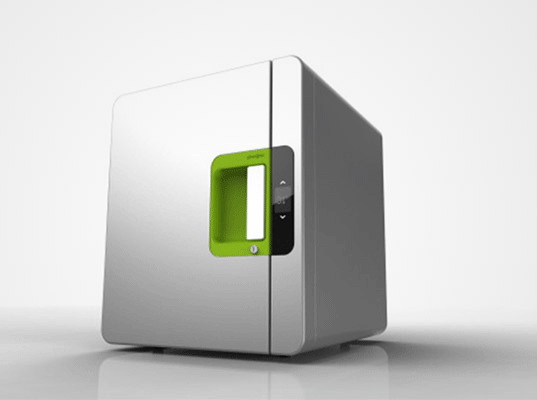The new MarketsandMarkets report Magnetic Refrigeration Market– GLOBAL FORECAST & ANALYSIS from 2016 TO 2022projects the magnetic refrigeration market size to reach USD 315.7million by 2022, growing at a compound annual growth rate (CAGR) of 98.7%, between 2017 and 2022.
 Focus on green refrigeration technology
Focus on green refrigeration technology
Current refrigeration and air conditioning systems use refrigerants that have ozone depletion potential (ODP) and high global warming potential (GWP). The U.S. and some of the European countries have been phasing out these refrigerants to reduce their impact on the environment. Hydrofluorocarbon (HFC) refrigerants such as R-134a, R-410a, or R-404a are already being phased out. The most common HFC refrigerant R-134a was already banned in the European Union in 2011. Refrigerants such as HCFC-22 or R-22 which are commonly used in the existing refrigeration system are also being phased out. Developing countries such as China and India have also pledged under the Montreal Protocol to phase out the production and consumption of HFCs. Magnetic refrigeration is a green refrigeration technology which works on the principle– magnetocaloric effect which implies that the magnetocaloric material heats up when exposed to a magnetic field and cools down when the magnetic field is removed. The magnetic refrigeration technique has been attracting considerable attention as an alternative to traditional cooling equipment that uses refrigerants such ashydrofluorocarbons (HCFs), chlorofluorocarbons (CFCs), carbon dioxide, or ammonia.
High energy efficiency expected to drive the market
In case of magnetic refrigeration systems, the magnetocaloric effect is reversible and only minimal amount energy is required as magnets do not require energy while creating the cooling effect; a small amount of energy is required for pumping cooling water through the system and for other minor operations. However, the total energy required is much lesser than that required for conventional refrigeration. Magnetic refrigeration prototypes have demonstrated 30% less energy consumption compared to conventional refrigeration technologies.
Magnetic refrigeration expected to be commercialized in commercial applications
The advantages of magnetic refrigeration technology over the conventional refrigeration technology such as lowenergy consumption, green technology, and low maintenance make it a potential substitute for most of the refrigeration and air conditioning applications. The magnetic refrigeration market caters to domestic,commercial, transportation, and industrial applications. Magnetic refrigeration would be incorporated initially in commercial applications by2016. Its implementation in other applications such as domestic, transportation, and industrial is expected in the next few years. Companies such as Cooltech Applications (France), Astronautics Corporation of America (U.S.), Camfridge Ltd. (U.K.), GE Electric Co. (U.S.), Qingdao Haier Co. Ltd. (China), and Whirlpool Corporation (U.S.) are working on incorporating the magnetic refrigeration technology in refrigeration and air conditioning systems.Magnetic refrigeration products in refrigeration include beverage coolers, icecream cabinets, cabinet displays, refrigerators,and freezers.Astronautics Corporation of America (U.S.), Qingdao Haier CO. Ltd.(China), and GE Electric Co. (U.S.)developed prototypes for beverage coolers which received a positive response from most sectors. Astronautics Corporation in collaboration with Haier and BASF SE (Germany) demonstrated beverage coolers based on magnetic refrigeration at the Consumer Electronics Show (CES) 2015 held in Las Vegas (U.S.). Cooltech Applications (France)has been testing ice cream cabinets based on the magnetic refrigeration technology.
The report provides the market size projection for magnetic refrigeration with segmentation –by application, by product, and by geography. The segmentation based on application areas covers domestic, commercial, transportation, and industrial. The segmentation based on product comprises refrigeration, air conditioning, and heat pumps.
The report also provides an in-depth analysis of key players in the magnetic refrigeration solutions and services ecosystem with their profiles, recent developments, key issues, SWOT analysis and opportunities in the market, global adoption trends, and future growth potentials.
Browse 66 tables and 66 figures spread through 153 pages and in-depth TOC on “Magnetic Refrigeration Market-Globalforecastto2020”
http://www.marketsandmarkets.com/Market-Reports/magnetic-refrigeration-market-243034247.html







